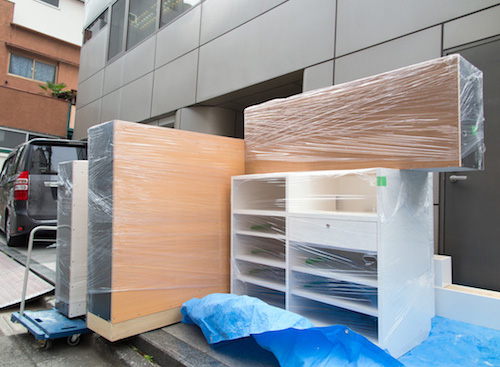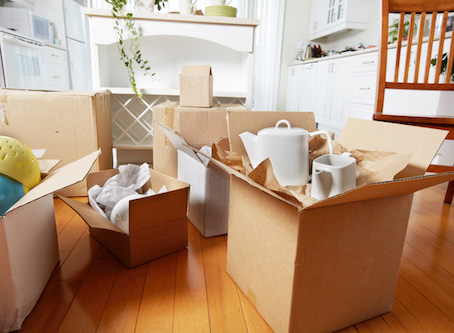Packing/Unpacking Tips
In General
 Tape the bottom of every box; tape the top closed tightly when full. Run two strips of tape along the side and one strip down the center. (If the box is still not strong enough, apply more tape on the sides.)
Tape the bottom of every box; tape the top closed tightly when full. Run two strips of tape along the side and one strip down the center. (If the box is still not strong enough, apply more tape on the sides.)- Use small boxes for heavier items; larger boxes for light weight, bulky items.
- Wrap small and/or fragile items individually.
- Stuff the top, bottom and sides of boxes with paper. This helps prevent shifting, rubbing and possible breakage.
- Stack boxes to the top to prevent them from being crushed. But don’t pack fragile items too tightly. Stuff with paper.
- Label the contents of every box and the room where it belongs. Group boxes together that belong in the same room.
Don’t Pack These Items
- Money, securities, valuable papers or jewelry. Keep them with you.
- Flammable items: aerosol cans, paints, gasoline, etc.
- Perishable times: frozen foods, produce, plants, etc.
- Soaps, polishes or medicines.
- Kitchenware or other heavy items in boxes with dishware.
Dishware and Glasses
- Use double corrugated boxes.

- Cushion the bottom with rolled up paper.
- Wrap each piece individually.
- Bundle flatware in groups of three and wrap the bundle.
- Don’t place one layer of dishware directly on top of another; separate with a layer of stuffed paper.
- Cushion the top and sides with paper to prevent shifting. The steadier the contents, the less the chance of damages is.
Clothing
- Put hanging clothes in wardrobe boxes.
- Place shoes in medium size boxes. Use paper to protect and keep pairs separated.
- Place non hanging clothes in medium size/linen size boxes.
Electronics
Electronics travel best in their original packaging; however, if you don't have the original boxes anymore, we can easily substitute our own professional materials to ensure they’re safe, sound and secure.
Pictures
- Use a picture box.
- Line bottom of box with paper.
- Place picture in box, then stuff front, back and along the top with paper.
- It is sometime possible to pack more than one picture in a box.
- Packing of pictures is always required for long distance moves or moves into storage.
- On a local move there is no need to pack your large pictures. The movers will deal with them on the day of the move.
Boxes. So how many do you need?
Use the chart below to help you get an idea. (Keep in mind, however, the longer you’ve lived in your home, the more stuff you will have accumulated.)
| Type of Dwelling | Approx. No. of Boxes |
| Studio | 10 – 20 |
| 1 Bedroom Apartment | 20 – 35 |
| 2 Bedroom Apartment | 25 – 40 |
| 2 Bedroom House | 25 – 45 |
| 3 Bedroom House | 30 – 55 |
| 4 Bedroom House | 40 – 65 |
| Larger | 70 |
Note: The amount/size of your unique belongings will determine the final number of boxes you’ll require.


 Review
Review